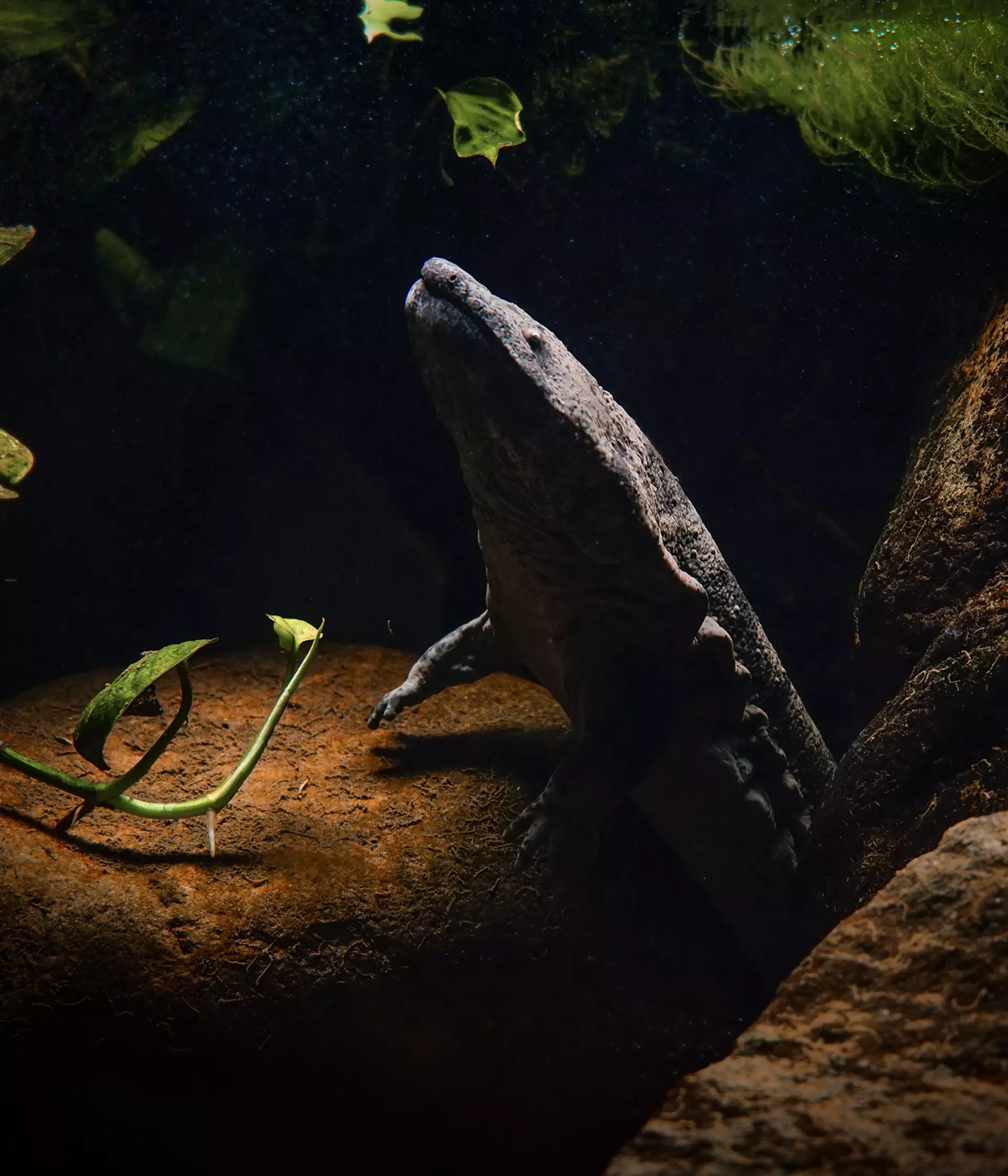Chinese giant salamander facts
- Chinese giant salamanders are the world's biggest amphibian, at full size they are around the size of a fully grown man at 1.8m in length.
- Chinese giant salamanders descended from an ancient group of salamanders that lived over 170 million years ago, going all the way back to the Jurassic period.
- They have poor eyesight, so the Chinese giant salamanders skin is covered by sensory nodes which detects vibrations and helps them find prey.
- Adult Chinese giant salamanders can absorb oxygen directly through their porous skin. Its wrinkled, baggy appearance increases the overall surface area for oxygen absorption.
- When threatened Chinese giant salamanders produce a white fluid through their skin that smells peppery to ward off potential predators.
- Some sources state that the Ying and Yang symbols are derived from two intertwined Chinese giant salamanders.
Chinese giant salamander diet
Chinese giant salamanders eat worms, crustaceans, insect larvae and small vertebrates, such as fish and frogs. They hunt using a gape and suck method, their throat expands, and then they open their mouth to cause suction to drag in water and prey.
Chinese giant salamander threats
Chinese giant salamanders have been overexploited for the luxury food market, farming practices may be causing hybridisation of different species and they are being over harvesting from the wild. They are also decreasing as a result of habitat loss.
Chinese giant salamanders at the Zoo
Our Chinese giant salamander 'Professor Lew' arrived in 2016 via the UK’s Border Force, who having prevented an attempt to illegally import the youngster into the country, asked the Zoo to act as its guardians. We’re proud to be the only zoo in the UK to have a Chinese giant salamander in residence, even though the back story of how this creature came here in the first place is such a sad one.
We worked for the best part of a year to build the perfect new home for the salamander - using vital information about the unique amphibian’s wild habitat, gathered by our scientists and conservationists during the biggest wildlife survey ever seen in China.
All of which makes the salamander’s arrival on British soil (presumably heading for someone’s illegal private collection), at first glance, a remarkable journey. But Professor’s Lew’s tale is sadly not as unusual as it sounds.
Our captivating salamander, with its slimy smile and crinkly purple tail, is far from alone – being yet another victim of one of the biggest threats facing animals today: the illegal wildlife trade.
We’ve provided a home for 3,370 animals confiscated by the UK’s Border Force, including Egyptian tortoises, red rain frogs, green tree pythons and hundreds of corals (yes, corals are animals…!). We work with customs officers to help identify and rehome these seized animals, which are often smuggled into this country to illegally despite being endangered in the wild.
Professor Lew is helping us raise awareness to the threats Chinese giant salamanders are facing and help us fight back against the illegal wildlife trade.
Chinese giant salamander conservation
Chinese giant salamander conservation at ZSL
At ZSL, we are developing possible routes to recovery, creating a new future for this ancient species.
